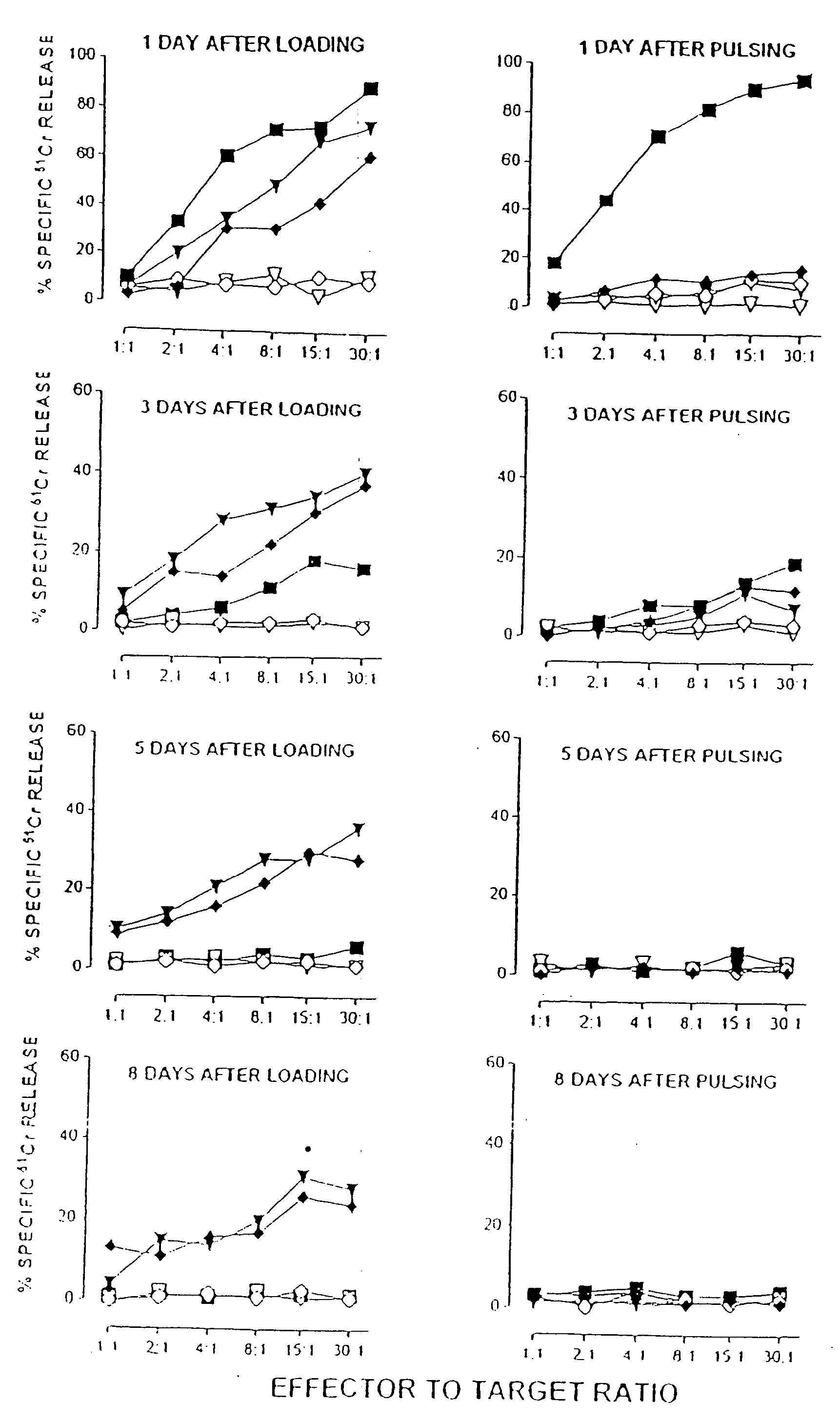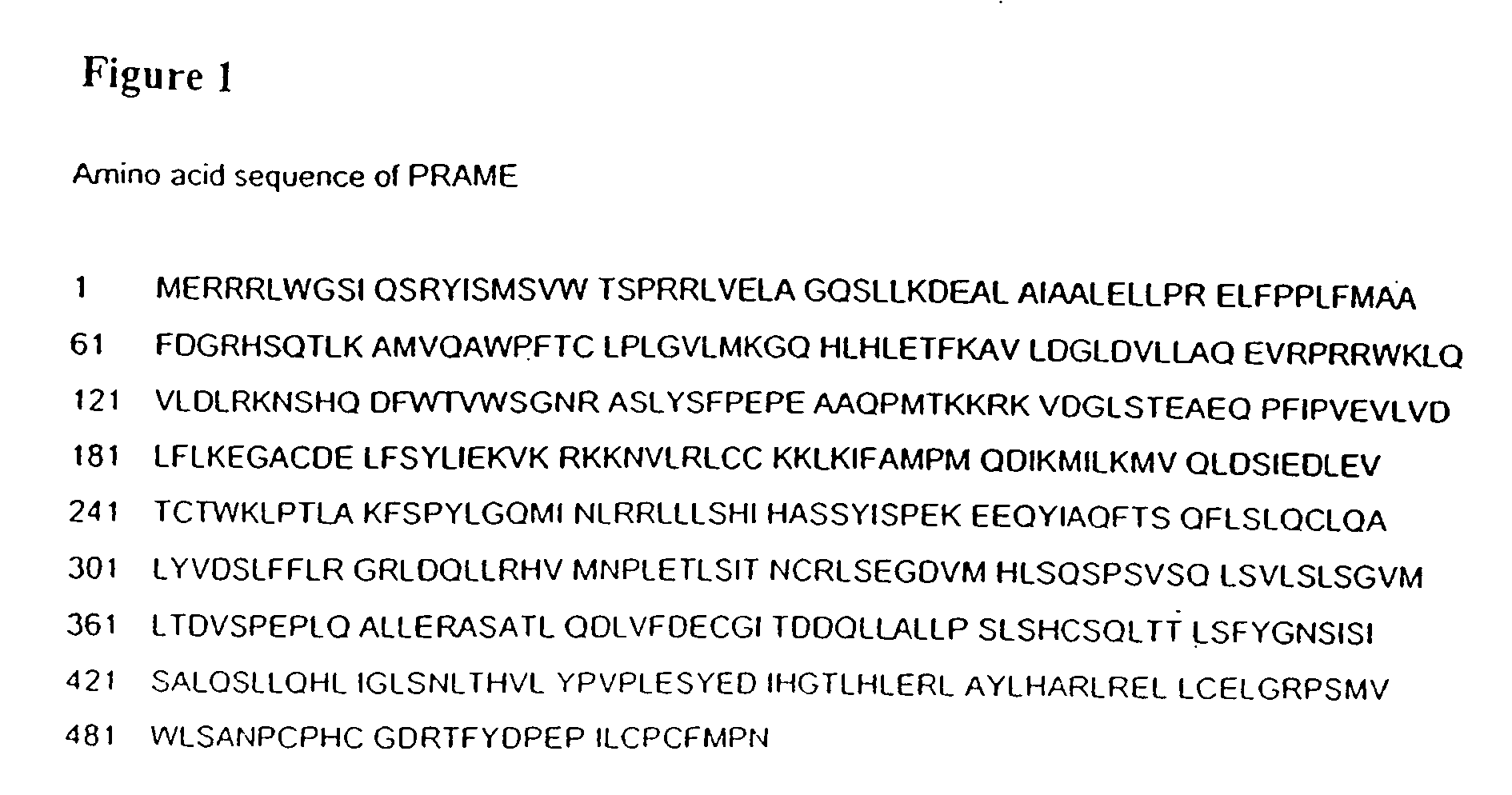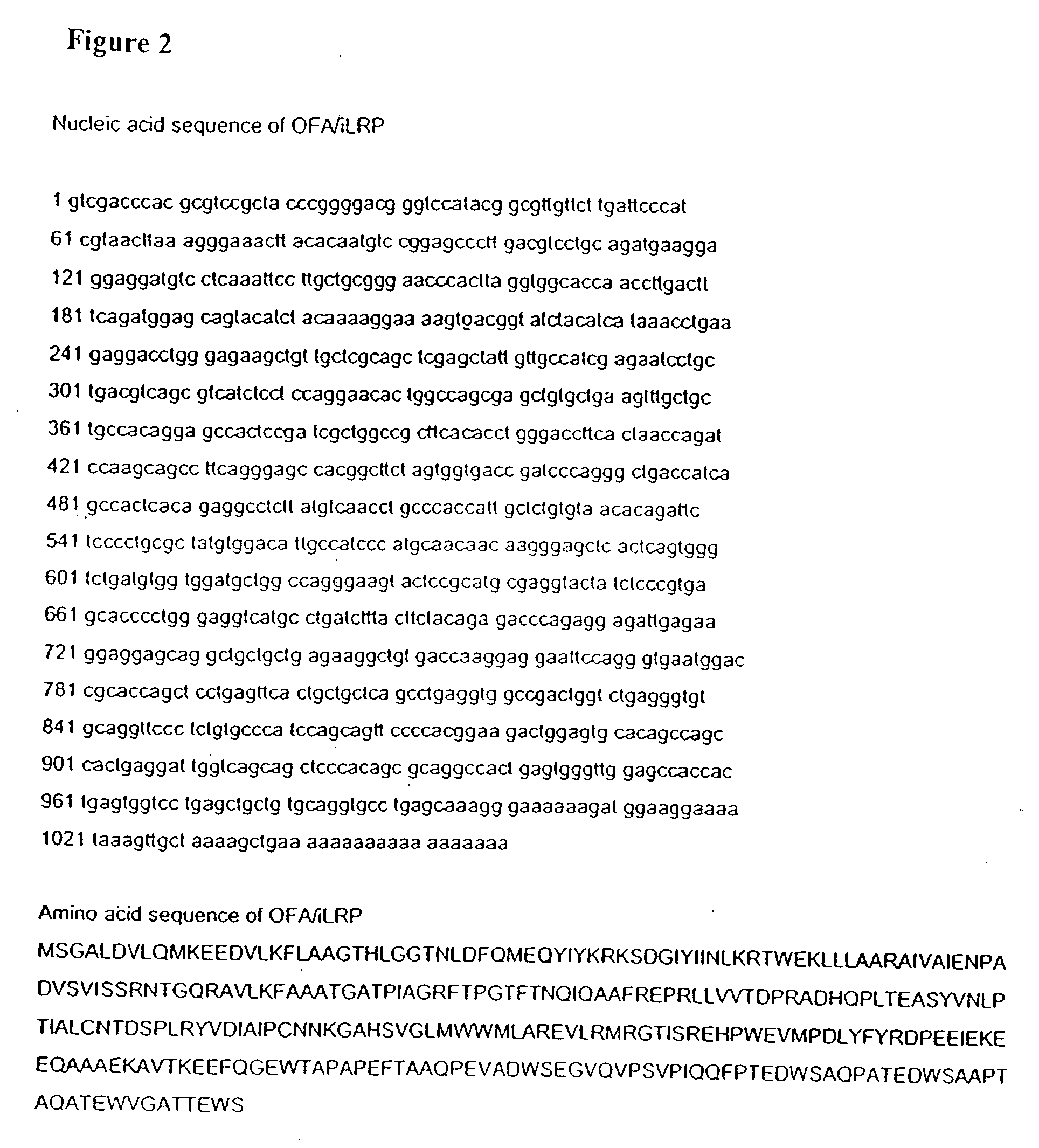Use of polymeric nanoparticles for vaccine delivery
a technology of nanoparticles and vaccines, applied in the field of human cancer or viral disease treatment and prevention, can solve the problems of limited taa expression, ununiversal taa expression, and dramatic clinical response, and achieve the effects of improving antigen presentation, reducing clinical risk, and reducing clinical risk
- Summary
- Abstract
- Description
- Claims
- Application Information
AI Technical Summary
Benefits of technology
Problems solved by technology
Method used
Image
Examples
example 1
Enhancing the Stability, Immunogenicity, and Antigen Presentation of PRAME-Derived Synthetic Peptides
[0101] Most attempts to treat cancer patients with TAA-derived synthetic peptides have not been successful. The following is therefore further research aimed at enhancing the stability and immunogenicity of the peptides used for vaccination of patients with cancer is essential.
[0102] When biologically active peptides are used clinically in their natural form, their biologic effects are often rapidly lost in vivo due to rapid elimination of the active form of the peptide. Since the skin is an enzymatically active organ, in vaccinations that utilize subcutaneous injections, peptides may be degraded by skin peptidases prior to effecting a significant immunological response. Thus, it is critical to design stable peptide formulations for vaccination of patients with cancer. The natural HLA-A2.1 restricted PRAME peptides were modified by N-terminal acetylation and / or C-terminal amidation...
example 2
Identification of HLA-A2.1-Restricted Immunogenic Peptides, Derived from the Antigen OFA / iLRP
[0122] OFA / iLRP-derived peptide sequences were identified that are immunogenic and can induce CTL both in healthy volunteers as well as in patients with cancer. The antigen-recognition activity of CTL is intimately linked with recognition of MHC (HLA in humans) molecules. In this invention the focus was on the HLA-A2 allele, which is the most common HLA molecule expressed by the general population in the United States. About 95% of HLA-A2+ individuals express the HLA-A2.1 subtype. For this reason, the identification of immunogenic peptides restricted by the HLA-A2.1 allele would not only serve as a proof of principle, but would also be applicable to a large portion of the patient population. The following modern methods were utilized for identification of immunogenic peptide sequences:
[0123] Manual step-wise approach to identify peptide sequences based on the known binding motifs for the H...
example 3
Enhancing Stability, Immunogenicity, and Antigen Presentation of OFA / iLRP-Derived Synthetic Peptides
[0126] Because most attempts to treat cancer patients with TAA-derived synthetic peptides were not successful, further research aimed at enhancing the stability and immunogenicity of the peptides used for vaccination of patients with cancer is essential. The following methods were utilized.
Terminal Modifications to Inhibit Proteolytic Degradation of the OFA / iLRP Peptides:
[0127] When biologically active peptides are used clinically in their natural form, their biologic effects are often rapidly lost in vivo due to rapid elimination of the active form of the peptide. Since the skin is an enzymatically active organ, in vaccinations that utilize subcutaneous injections, peptides may be degraded by skin peptidases prior to effecting a significant immunological response. Thus, it is critical to design stable peptide formulations for vaccination of patients with cancer. The natural HLA-A...
PUM
| Property | Measurement | Unit |
|---|---|---|
| size | aaaaa | aaaaa |
| size | aaaaa | aaaaa |
| affinity | aaaaa | aaaaa |
Abstract
Description
Claims
Application Information
 Login to View More
Login to View More - R&D
- Intellectual Property
- Life Sciences
- Materials
- Tech Scout
- Unparalleled Data Quality
- Higher Quality Content
- 60% Fewer Hallucinations
Browse by: Latest US Patents, China's latest patents, Technical Efficacy Thesaurus, Application Domain, Technology Topic, Popular Technical Reports.
© 2025 PatSnap. All rights reserved.Legal|Privacy policy|Modern Slavery Act Transparency Statement|Sitemap|About US| Contact US: help@patsnap.com



